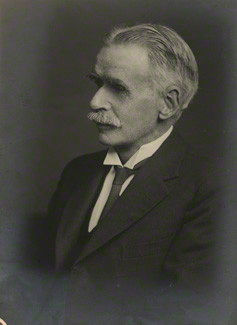The History of ADHD
- Breanne McGlade
- Dec 4, 2016
- 2 min read

Early 1900'S:
Prior to the 1960’s, ADHD (attention deficit/hyperactivity disorder) was referred to as hyperkinetic impulse disorder. ADHD is a neurobehavioral disorder that is typically diagnosed in children and continues through adulthood. In 1902, a British pediatrician, Sir George Still, was the first to document his findings of atypical behavior in children. He described his observations as “an abnormal defect of moral control in children.” By this, Sir George Still meant that affected children, although intelligent, were not able to maintain self-control.

1936:
The U.S. Food and Drug Administration (FDA) approved Benzedrine, a medication, which was distributed to young patients to treat hyperkinetic impulse disorder, presently known as ADHD. Dr. Charles Bradley was the first to document Benzedrine’s clinical success which noted improvements in academic performance in children.
1952:
The APA, American Psychological Association, released the first “
Diagnostic and Statistical Manual of Mental Disorders” (DSM) which recognized and listed all mental disorders. Hyperkinetic impulse disorder (ADHD) went unrecognized in the first edition of the DSM. Hyperkinetic impulse disorder was later classified in the second edition of the DSM.
1980:
The third edition of the DSM was released, and the APA changed the name of the disorder from hyperkinetic impulse disorder to ADD (attention deficit disorder). Scientists believed that hyperactivity was not a common symptom of the disorder and created two subtypes 1. ADD with hyperactivity 2. ADD without hyperactivity. Seven years later, the APA changed the name from ADD to ADHD.
1990's:
As the number of clinical cases arose, new medications became available to the public for treatment. It is believed that the increase in diagnostic cases significantly rose for various reasons and those reasons being 1. Doctors were able to effectively diagnose patients as knowledge of the disorder increased. 2. Parents became aware of the disorder, ADHD, and sought out medical professionals to diagnose their children’s symptoms. 3. More children actually had ADHD.
2000’s:
The APA released the fourth edition of the DSM in 2000. The APA recognized the disorder and established three subtypes which are as follows: combined type ADHD, predominantly inattentive type ADHD, and predominantly hyperactive-impulsive type ADHD. These subtypes are still used by doctors today. Presently the fifth edition of the DSM is used by dctors to clinically diagnose patients with mental disorders.
Currently, researchers are still working towards finding the root cause(s) and treatments for ADHD. There is still much research that needs to be done in order to better understand the disorder. Scientists believe that the disorder originates from a genetic link, but the answers are still unclear. ADHD continues to remain as a chronic condition that does not obtain a cure.
curenuestothatstilldoesnooCUCURcure.chronicconditionthatstildoesnotobtur




Comentários